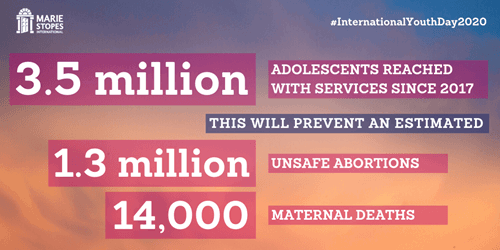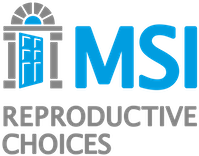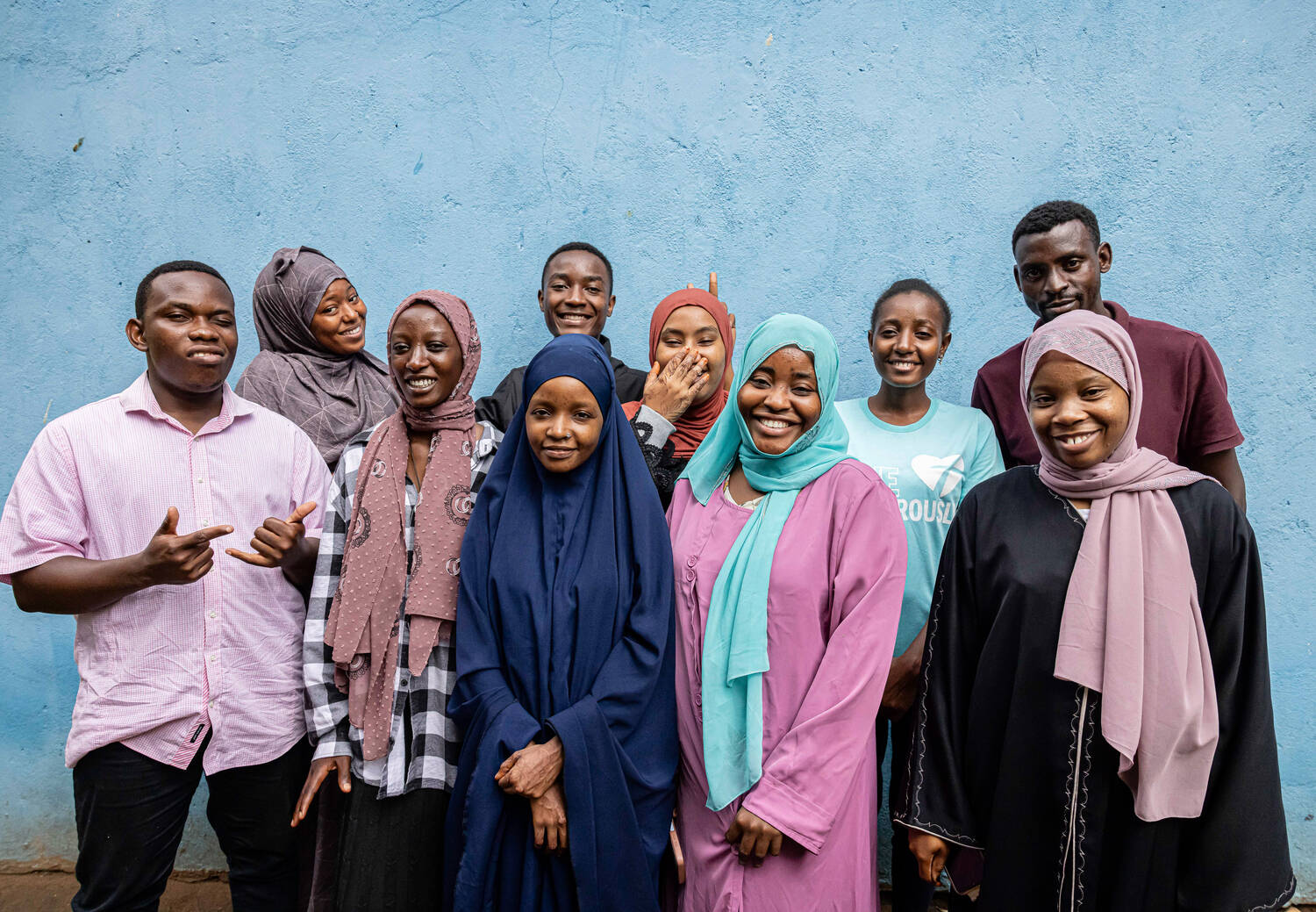When we shifted our focus and invested in delivering adolescent-focused services in 2017, we saw our reach significantly increase across our country programmes.
By putting young people at the heart of our programmes our proportion of adolescent clients grew from 6% in 2016 to 15% by 2019.
Despite continuous recognition of the importance of providing choice for adolescents and young people, MSI’s adolescent reach remained stubbornly low for years – with adolescents averaging just 6.3% of all client visits between 2012 and 2016.
So, in 2017 we shifted our focus and invested in delivering adolescent-focused services, in the knowledge that adolescent access to sexual and reproductive healthcare is key to MSI’s mission. As shared previously on our website, the new adolescent strategy required resources, new operational guidelines and an effective way of measuring impact and it worked. By putting young people at the heart of our programmes we witnessed our proportion of adolescent clients grow from 6% in 2016 to 15% across our country programmes by 2019.

This means that since launching the strategy, we have served an estimated 3.5 million adolescents with high quality sexual and reproductive health (SRH) services, equating to more than 100,000 adolescents per month in recent months. This impact has resulted in approximately 4.9 million unintended pregnancies being averted and 1.3 million unsafe abortions averted across MSI’s country programmes.
However, as a global community, we have a long way to go before all young people can access their sexual and reproductive health care and rights. Evidence indicates that an estimated 20 million adolescents aged 15-19 still have unmet need for contraception and 3.2 million adolescents resort to unsafe abortion annually. At MSI, we are committed to playing our part in ensuring young people have the information and access they need to make informed decisions. And although we have learned that there is no quick fix to reaching young people with sexual and reproductive health services, along the way we have identified three key steps that are essential to successfully improving access.
1. Make it normal
In most of the countries where we operate, young people’s autonomy is influenced by others – including their peers, parents, community leaders, health workers, and policy makers. Social norms around fertility expectations and taboos on discussion of sex and unplanned pregnancy limit adolescents’ ability to make healthy decisions. Often, community gatekeepers play a critical role in reinforcing or challenging these social norms. As a result, ensuring that community leaders are aware of the benefits of access to sexual and reproductive healthcare services for the young people in their community is key. Having their support for programmes can reduce any stigma and backlash and create an enabling environment for adolescents to access or ask for the SRH information and services they deserve. To create this community buy-in, we learned that:
- Community gatekeepers need to be engaged from start to finish. For instance, in Sierra Leone community chiefs take the leading role in all community engagement activities and are responsible for introducing MSI to the broader community before we initiate adolescent-specific sensitising activities. This approach has contributed to Sierra Leone’s success with reaching adolescents, and the programme serves about 69,000 adolescents annually accounting for nearly a third (31%) of all their clients.
- Messaging only works if it resonates with the priorities and values of the community. In Sierra Leone access to contraception is key to keeping teenage girls and young women in education; in Zambia reproductive autonomy is central to family economic stability and community growth; in Kenya awareness of sexual health builds parent-teen rapport and safeguards futures. Our national teams used this local understanding of values and priorities to tailor the community messaging in each of the respective programmes to win over hearts and minds.
- Using exercises that build empathy and understanding for adolescent needs among leaders allows them to walk in the shoes of young women and understand how the rights of adolescents align with the priorities of their community. Marie Stopes Zambia use local statistics on teenage pregnancy as well as role play to support community gatekeepers to understand the adolescent SRH journey and the challenges they face.
- Identifying champions who already have an influential position in the community helps get the message across – Marie Stopes in Nigeria works with male community officers to disseminate culturally appropriate family planning messages and to mobilise men in the community to support their wives in accessing services; in Uganda, media agents and religious leaders are trained as community champions to tackle stigma and misconceptions around contraception while still generating media and religious impact. Having these champions on board goes a long way in ensuring our community engagement work is sustainable and long-lasting.
2. Make it desirable
Adolescents face several barriers in accessing accurate and complete information during their SRH journey. Adolescents often cite fear of side effects, not being married, having infrequent sex, having no children, partner/spouse opposition, breastfeeding, and postpartum amenorrhoea as common reasons for not using contraception. To address these barriers, we use behavioural insights to design communication strategies that support adolescents to build the urgency for contraception and frame family planning as a lifestyle choice. In doing this we have learned that:
- Marketing strategies are effective if targeted to specific segments. This helps to align activities and messages to resonate with the needs, barriers, and aspirations of different adolescent sub-groups. In West Africa, we use a human centred design approach – ‘’La Famille Idéale’’ – to engage married adolescents in contraceptive conversations using a set of family-oriented activities whereas in Kenya the “Future Fab” approach used messaging around personal aspirations and dreams to connect with urban youth.
- Involving adolescents in the design of communication provides valuable insights. By ensuring that the messages and communication channels are relevant and persuasive and align with the language, fears and aspirations of young people.
- Mobilisers that are tailored to adolescent segments are more effective at creating demand. In most settings, we found satisfied users who are the same age as adolescents were effective at spearheading mobilisation and interpersonal communication activities. However, in other settings, older trusted members of society who are pro-adolescent contraception were found to be more trustworthy and persuasive. In rural Zambia, they found that grandmothers were the most effective mobilisers for adolescents; in rural Uganda and Nigeria, they found that parents who are pro-adolescent contraception worked better; in Sierra Leone the team partner with school matrons and counsellors to provide discreet referrals for adolescents.
3. Make it easy
We know that adolescents face a multitude of barriers in accessing SRH services such as pricing, provider bias, location, and discretion of services. To address these barriers, we adapted our service delivery channels to be welcoming, accessible, and responsive to the needs of adolescent clients. During this process we learned that:
- Using data helps us understand who needs us and where, and how we can reach them. We find working through mobile outreach, which allows us to deliver services in rural communities, as well as government health providers are effective ways of reaching rural adolescents. As a result, we were able to scale up our efforts via these channels and rural adolescents now account for half (50%) of all adolescents we serve with SRH care.
- Focusing on tailoring existing delivery to adolescent needs works better than creating standalone youth services. This helps to maintain productivity and increase cost-effectiveness.
- Mechanisms for removing cost barriers such as vouchers can be costly but can have lasting effects on user and provider behaviour. In Uganda and Ethiopia, we noticed that our social franchise private clinics continued to reach high proportions of adolescents despite halting vouchers. This was due to prior investment in both demand generation and provider training, creating trusted providers for adolescents that they continued to advocate via word of mouth.
- Investment in provider support including training and mentorship has a direct impact on adolescent reach, better adolescent method mix, and client satisfaction levels. Our programme in Uganda was able to increase its adolescent reach from 9.8% in 2016 to 17% in 2018 through this method. In 2016, the programme was seeing adolescents with no existing children receiving a different method mix to adolescents with children – but by 2018, after extensive work around provider training and support, the method mix equalised between groups. In addition, the programme saw high adolescent client satisfaction levels in a client exit survey and mystery client survey, demonstrating the approach was also client centred.
- Integrating family planning with other SRH services like HIV and STI management is effective at destigmatising services, making the services more acceptable and appealing for adolescents. However, service providers need support to triage, manage client flow, and cross-sell services to ensure effective integrated programmes.
We know that we are making in-roads with our adolescent SRH services, serving around 4,000 adolescents every single day. We are also still learning. Adolescents are the future and yet one of the most difficult segments to reach with sexual and reproductive health services. However, guided by evidence and pragmatic insights from our on-going programmes and the wider adolescent and youth SRH sector, MSI is proud to continue to support adolescents to step forward and make choices to define their own future: for themselves, their families and their communities.
Diana Amanyire is MSI’s Global Marketing Advisor, focusing on adolescents and vulnerable populations








